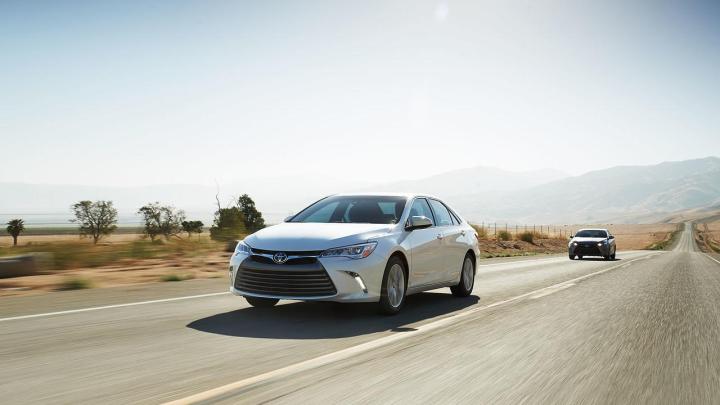
Cars.com has released its 2015 American-Made Index (AMI), a comprehensive ranking of the vehicles with the most U.S.- or Canadian-built parts content. Which ride took the top spot? The 2015 Toyota Camry.
It may seem like an odd result to those unfamiliar with lists like these, but the outcome is actually nothing new. This is the fifth time that the Camry has the claimed top AMI honors, with the last occurrence being in 2012. A vehicle manufactured by an American company doesn’t show up until the number three spot with the Chevrolet Traverse.
Reduced manufacturing and labor costs abroad are the main catalysts for this, and more and more American companies are preparing their products in other countries as a consequence. In fact, the number of vehicles that qualified for the AMI is smaller than ever in 2015. For reference, cars with less than 75 percent domestic parts are disqualified.

“This year’s list of eligible cars is down to just seven, the smallest number we’ve ever seen,” said Cars.com editor-in-chief Patrick Olsen. “Just five years ago, 29 cars qualified for the American-Made Index, and today it is fewer than 10.”
Despite the shift toward overseas manufacturing, American consumers are still passionate about buying cars made at home. According to a survey by Cars.com, 28 percent of customers polled said they would only consider buying domestic when shopping for a new car. That’s up from 23 percent in 2011.
Another development of note is that the Ford F-150, the best-selling vehicle in the United States for over 30 years, is no longer featured on the AMI. With the 2015 model’s thorough revamping and new aluminum body, the iconic pickup truck now features less than 75 percent domestic components.
Editors' Recommendations
- Camry vs. Corolla
- Most people want to keep their cars away from full self-driving, study says
- These are our picks for the most American cars ever made


